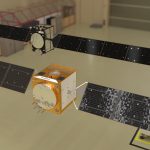In the decades and centuries preceding satellites and GPS, navigation relied much more heavily on human ingenuity in determining location relative to maps, surroundings and visual reference points. Particularly in harsh and challenging environments, such as the Sahara desert.
Even more-so, in the Sahara desert, engaged in armed conflict. Maj. Mike Sadler, who died in January at 103, did this “like a human GPS”, guiding British forces against the Axis Powers in World War II.
As detailed in a recent New York Times obituary:
But he got his men to the targets — and out again. Without him, they said, the commandos could not have crossed hundreds of miles of desert, found enemy bases on the Mediterranean Coast, destroyed more than 325 aircraft, blown up ammunition and supply dumps…or found their way back to hidden bases.
He spent weeks studying navigation techniques, including use of a theodolite — a telescopic device, with two perpendicular axes, used mainly by surveyors, for measuring angles in the horizontal and vertical planes. It was not unlike the sextant used by mariners to fix positions at sea.
Ben Macintyre, the author of “Rogue Heroes: The History of the SAS, Britain’s Secret Special Forces Unit That Sabotaged the Nazis and Changed the Nature of War” (2016), wrote that Mr. Sadler’s remarkable skills in desert navigation were as much art as science, especially because his celestial observations had to be taken on uneven desert terrain.
See Maj. Sadler depicted in the currently airing BBC television series, “SAS: Rogue Heroes”, and read the New York Times obituary here, detailing much more of Maj. Sadler’s remarkable navigation prowess in the days before satellite-aided navigation was available.






